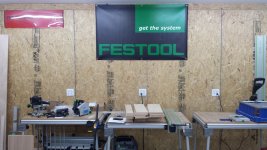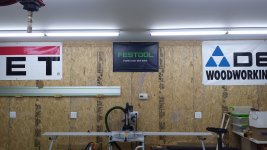I built my shop over 20 years ago and I did a FEW things right.

First, I ran a separate 200 amp service to the shop. DO THIS!!!!!!
Second - I placed a 2-gang outlet box about every 10-12 feet all around the perimeter of the shop - I wish I would have put in more of them and had them closer together. I then did home runs of electrical wire from each outlet box back to the breaker panel with 10/3 romex. In this way every box can have either 2 separate 120 Volt double receptacles (four 'plug' spots) *OR* I can quickly pull the corresponding 120 Volt breakers and outlets and replace them with 240 Volt ones and have a 240Volt, 30 Amp receptacle at that location.
Third - I use standard 4-wire dryer receptacles in the wall, and all of my 240 Volt tools have molded 'dryer' style plugs on them. This has proven to be a great choice for me as there is no concern over bad connections at the plug. Also, the bits and pieces (receptacles, covers, cord sets, etc.) are readily available with multitudes of options.
Fourth - I buried a number of electrical, coax, and communication wires from the shop to the house. I put in 2 coax lines, 2 phone lines, some 'spare' small gauge wires, and one network cable (remember this was 20 years ago). A couple of summers back I rented a trencher and buried two 2" pvc conduit pipes between the shop and the house. I have since pulled in a couple of Cat 6 cables plus a couple more coax lines, and I have plenty of room for additions.
Fifth - I put in a floor drain. My shop is used for both woodworking and general repair on my trucks, tractors, forklift, etc. It is WONDERFUL to park a frozen-up vehicle in the shop at night, then come out in the morning to find it nice and warm with all the snow and ice GONE!!!
Sixth - When I built the shop I found a used furnace and installed it. Nothing fancy, but it made heat. Then several years ago I was having trouble with it and the local utility just happened to be offering incredible pricing on new A/C equipment with free installation and zero interest for 36 months. They wouldn't sell me a new furnace, but they WOULD sell me a new forced air A/C unit - which required them to put in a furnace along with it - so my shop is now heated AND air conditioned.
Edit: I forgot to mention that the furnace is a sealed combustion type, so no shop air (which might have sawdust or vapors in it) ever hits the combustion chamber. That was a BIG safety concern for me and sold me on the new system right away.
I'll keep reading this thread and add more if i think of anything...



